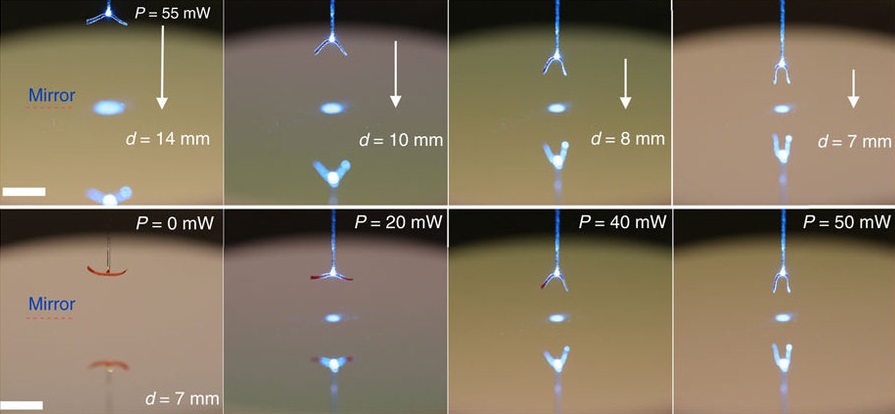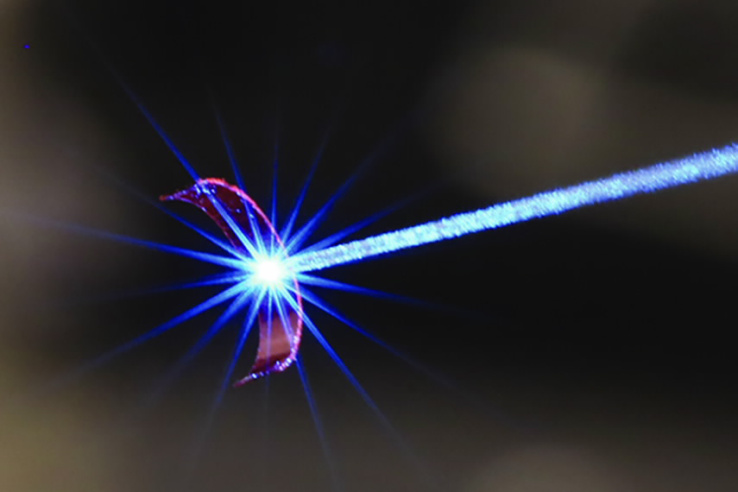The problem with tiny robots, if there can really be said to be one, is that you can’t put enough stuff on them. Cameras and motors don’t shrink down very well, meaning if you want your robot to grab something, you’d better come up with a new way to see it and hold onto it. And that’s just what Finnish researchers have done with this bio-inspired, super-small gripper.
The researchers, from Tampere University of Technology, designed the gripper along the lines of the Venus flytrap, which waits patiently for something tasty to trigger its grip. In the flytrap, it’s little hairs that set things off, while in the gripper it’s light.
That’s because the whole thing is really just a strip of a special, light-sensitive liquid crystal elastomer. A strand of optical fiber pierces the center, and blue light is shone through it. When that light is reflected back by something nearby, it causes the strip to flex forward, gripping whatever that object is.
 Its simplicity, low power requirements and flexibility make it ideal for micro-sized robots that need to grab small, fragile things, for instance crystals in an experiment or bundles of cells being cultured.
Its simplicity, low power requirements and flexibility make it ideal for micro-sized robots that need to grab small, fragile things, for instance crystals in an experiment or bundles of cells being cultured.
 “We are currently investigating ways of making the elastomer even smarter,” said Arri Priimägi, who leads the research group. “The next thing we would like to teach our flytrap is color recognition.”
“We are currently investigating ways of making the elastomer even smarter,” said Arri Priimägi, who leads the research group. “The next thing we would like to teach our flytrap is color recognition.”
The team’s work appears in the latest issue of Nature Communications.
Featured Image: Tampere University of Technology














